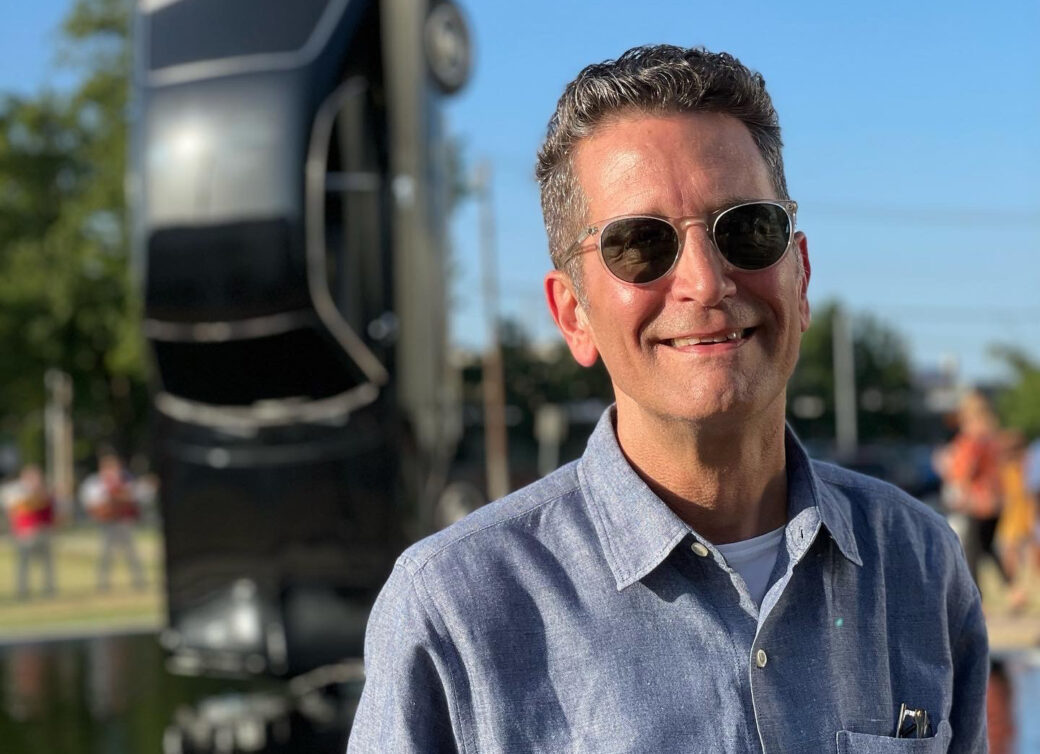
10 years and then some
Around Oklahoma Contemporary and throughout the Oklahoma arts scene, the name Steve Boyd holds a special place in hearts. After more than 20 years of museum-professional experience and 10 years with us, Oklahoma Contemporary’s exhibits manager knows a thing or two about proper exhibition execution.

From contracts and loan agreements to design and visual prowess, Boyd has long been our institution’s go-to guide for all things exhibitions, from the fairgrounds to our new home at 11 NW 11th. When we finally got him to sit down long enough for an interview to celebrate his 10th anniversary, the gracious team player had nothing but overflowing love and appreciation for his colleagues, mentors and peers who have helped, walked alongside and worked with him over the years.
Asked how it feels to have a decade with Oklahoma Contemporary under his belt, the exhibits expert said: “Really, I’m proud of what we have become in the last 10 years. People are looking at us as the benchmark now, and that’s pretty cool.”
Pretty cool, indeed! We sat with Boyd to chat all things installation, Marfa Contemporary, Campbell Art Park and, ultimately, community. We can only wedge so much appreciation into a #ThursdayThree, but it’s a start to honoring Boyd’s hard work with us and throughout the Oklahoma City arts scene.
How did your career path lead you to Oklahoma Contemporary?
My degree is in museum studies and art history. My first museum job was at the Oklahoma Museum of Art when it was still in Nichols Hills. Don Finch, who was the director there, was kind of one of my early mentors and really got me interested in museum business. I got out for a while did some other things, then started working at the National Cowboy Museum in 1996.
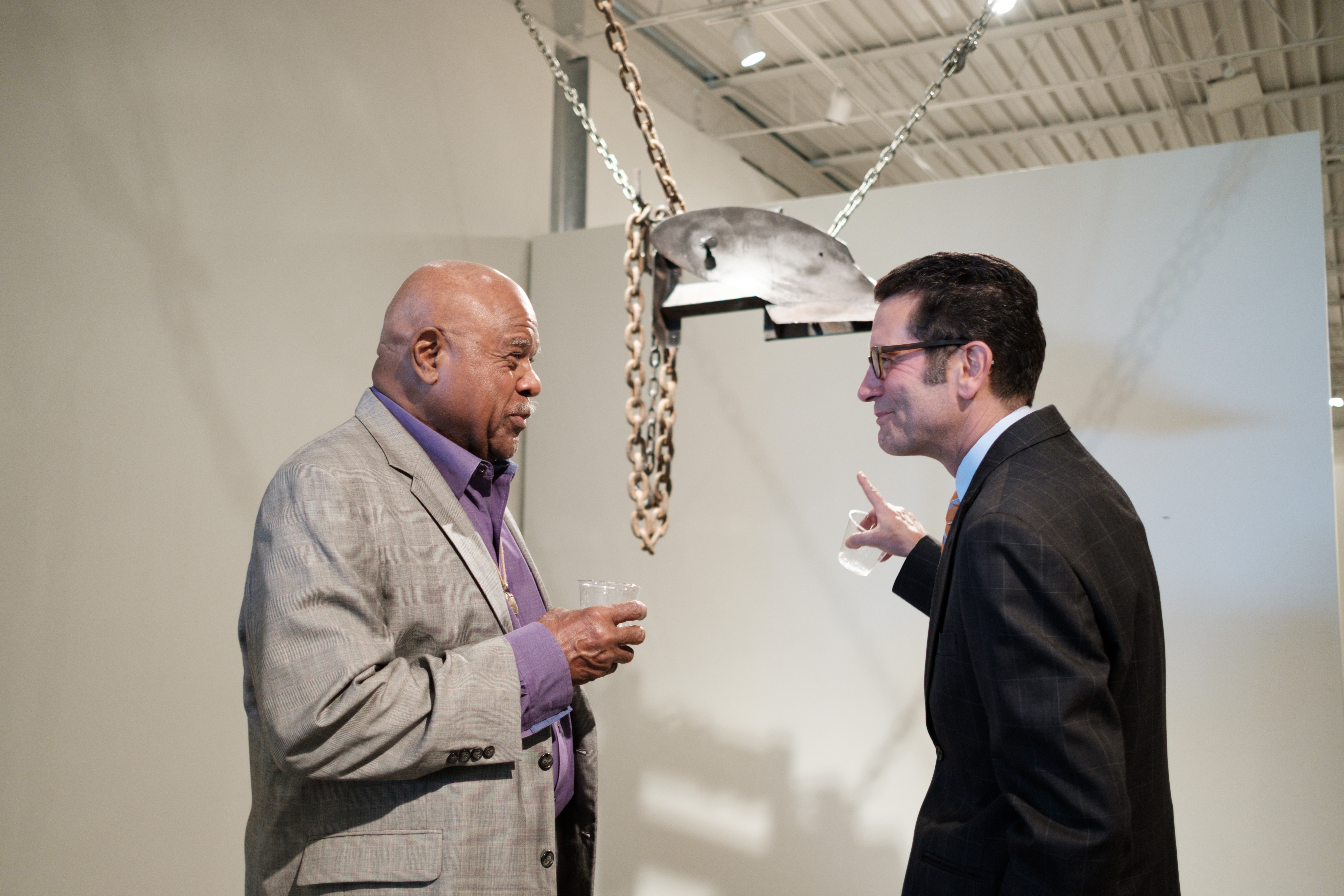
I worked in the gift shop, and after about six months I was managing — I’d never worked retail before. When I was leaving, because I had been offered another job, the Cowboy offered me the assistant registrar position, so I took that and stayed there for 16 years. Not in that specific position: I went from assistant registrar to chief preparator and exhibition designer. Most of my background had been in either project management or 3-D design, so it was a good fit for me.
I am really proud that whenever I first came to Oklahoma Contemporary, I was charged with a kind of DIY-community art space, and the vision of our board, founders and leadership was to step up to the next level and be world class. So I was charged with helping us bridge that gap and best practices and helping us make that jump from a small org to a world-class org. And we truly are! The exhibitions that we’ve had are truly world class.
Can you talk about some of your top installations?
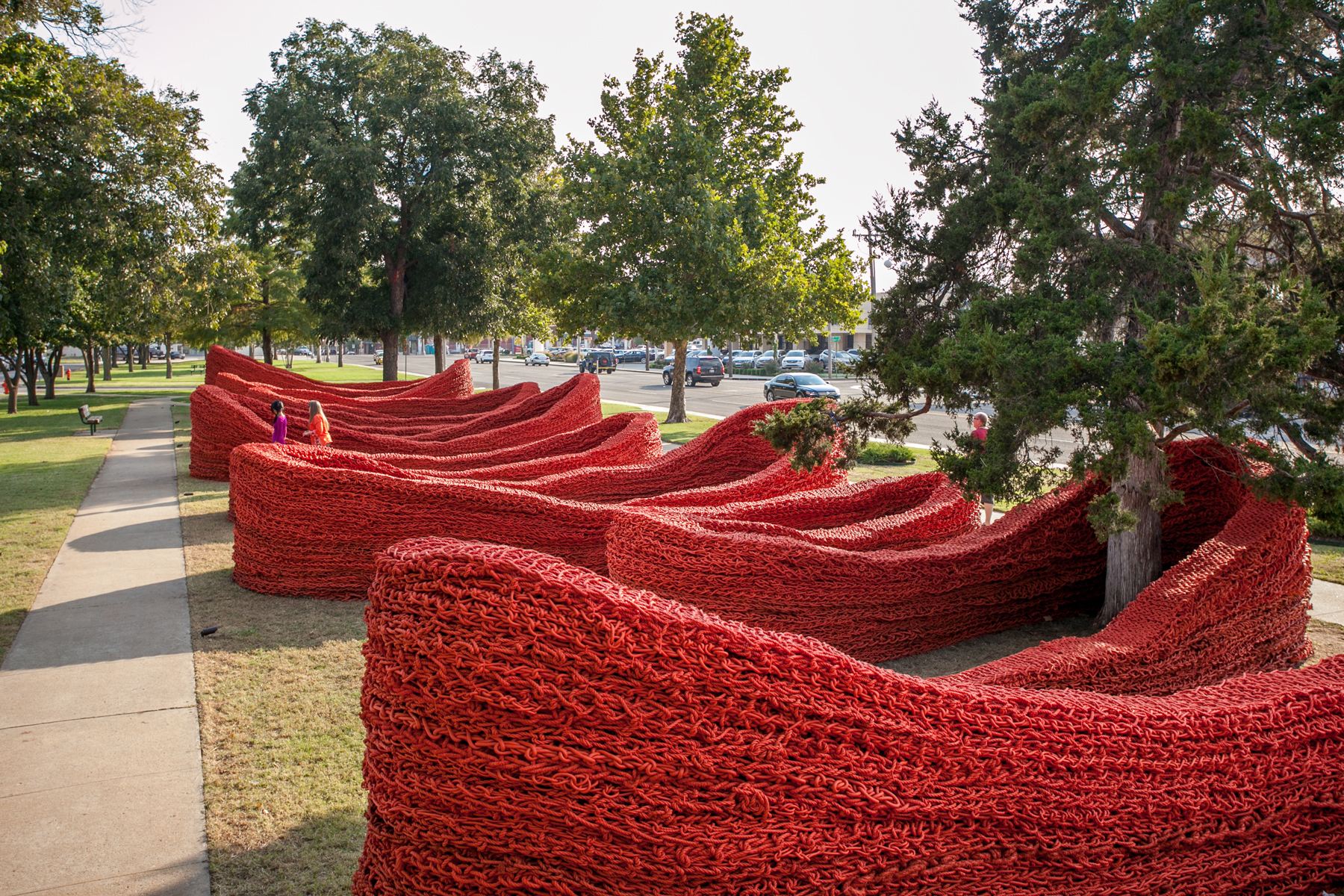
When we did Terra (with artist Orly Genger), we didn’t have the (new) building at the time. There was Campbell Art Park — a city park that had a maintenance agreement with a philanthropy in town, but they gave us a usage agreement to use the park. No one had really done a public art installation like that: in the city, that was in a public park, held by a philanthropy. There were a lot of moving parts. So I worked with, again, another one of my mentors — I learned so much about public art from Robbie Kienzle, who just passed this last year. She held my hand through this whole thing, and she had not done it either, as she was fairly new at her position in the city at the time. So when we started, I had to go through the 420 W. Main (City of Oklahoma City) offices, from floor to floor to floor to floor, to get signoffs from the engineer and traffic and the park department. Everybody had to sign off. So we streamlined that process.
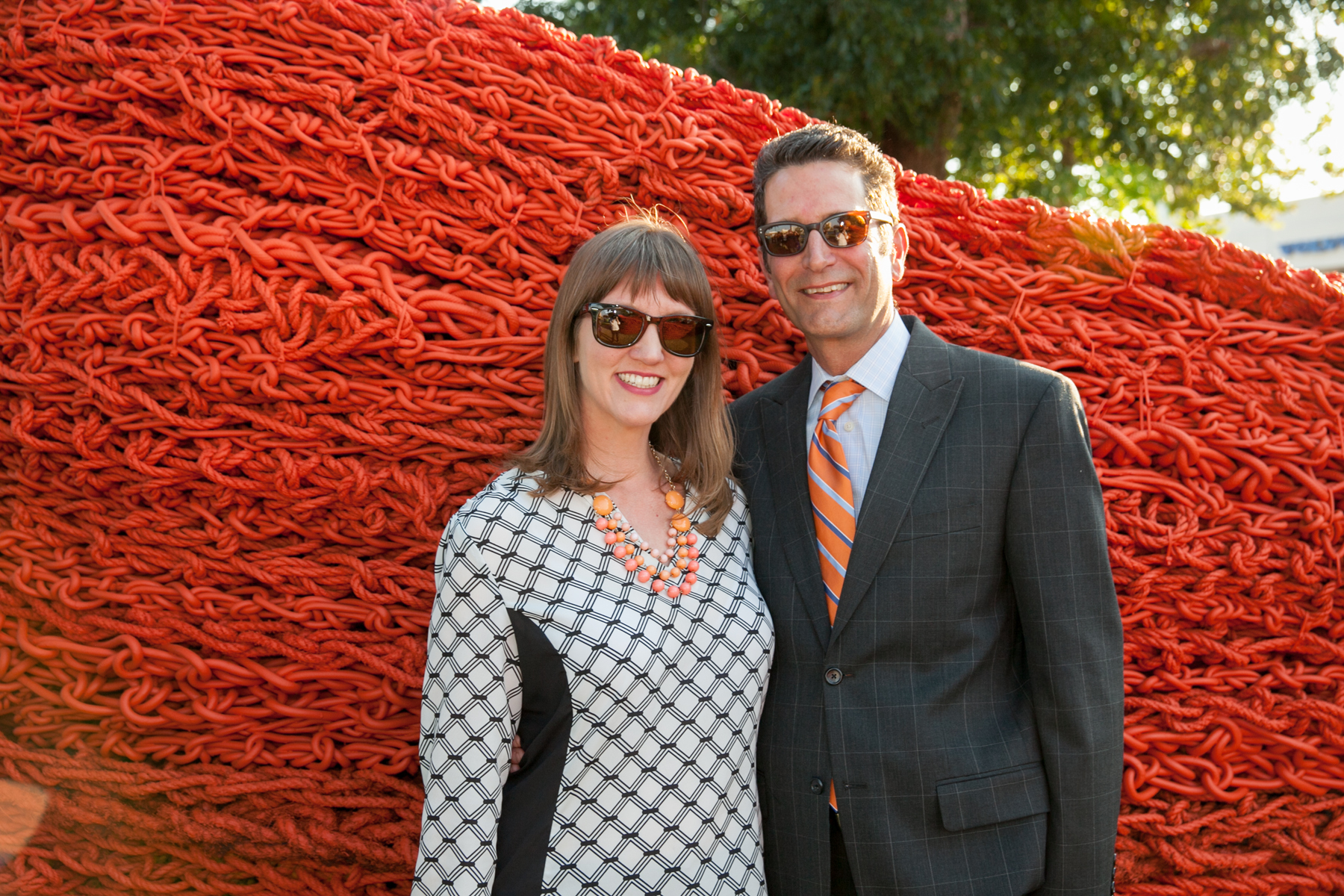
But I really can’t say enough about the department of Cultural Affairs in OKC. It seemed like a lot of work, and, at first, seemed like a lot of hoops to jump through. But they wanted us to succeed, held our hand through all of it. There’s no way we could have done anything without them, and I learned so much about what it takes to install public art.
But for Terra, we had a much smaller budget, and we used almost all volunteer labor to install it. We had signup sheets for half days for people to come help. It can be a little challenging, but it was so cool to have community buy in, who came and worked on it. I thought that was a great exhibit, and I was really proud that we had done something like that for the first time.

Now Marfa, Marfa (Contemporary) was super busy and a lot of work. I spent 30 to 40 days a year in Marfa, gone for 10 days at a time, and I had a young child. It was trying but, for those of us who have a background in the art world, Marfa Contemporary is really a feather in your cap. Marfa is such an art mecca, and people all over the world know what that is. I felt fortunate to work down there. I enjoyed it, I really really enjoyed it, and I enjoyed the people and the landscape.
And I got to install Gonzalo (Lebrija) twice! Once at Marfa and then now here. Same installation but in two different places! Of all the Guadalajara artists that Natalie (Roncone), Marfa Contemporary’s then director, brought to Marfa, who we then got to have all of them plus more in the La casa show — that was just really neat that the friendships and connections we made in Marfa got to come to our new building here.

One thing we couldn’t do here in our new building that we could at Fairgrounds (which sure was challenging, but just a really cool exhibition) was Not for Sale. We had the graffiti artists come in — you know a lot of graffiti artists are kind of doing this at odds with the law, moving fast, trying to do it before they get caught, and looking over their shoulder. We gave them the opportunity to come in a gallery space and take all the time they wanted with spray-paint and acrylics. To spend three and four days to do whatever they want. So we had to hire overnight security, and while the artists were gone, we basically created a paint booth around the whole gallery and left all the doors open and had fans from the back blowing out the front because of the fumes.
What are some behind-the-scenes scoops about installing exhibitions that people may never know?
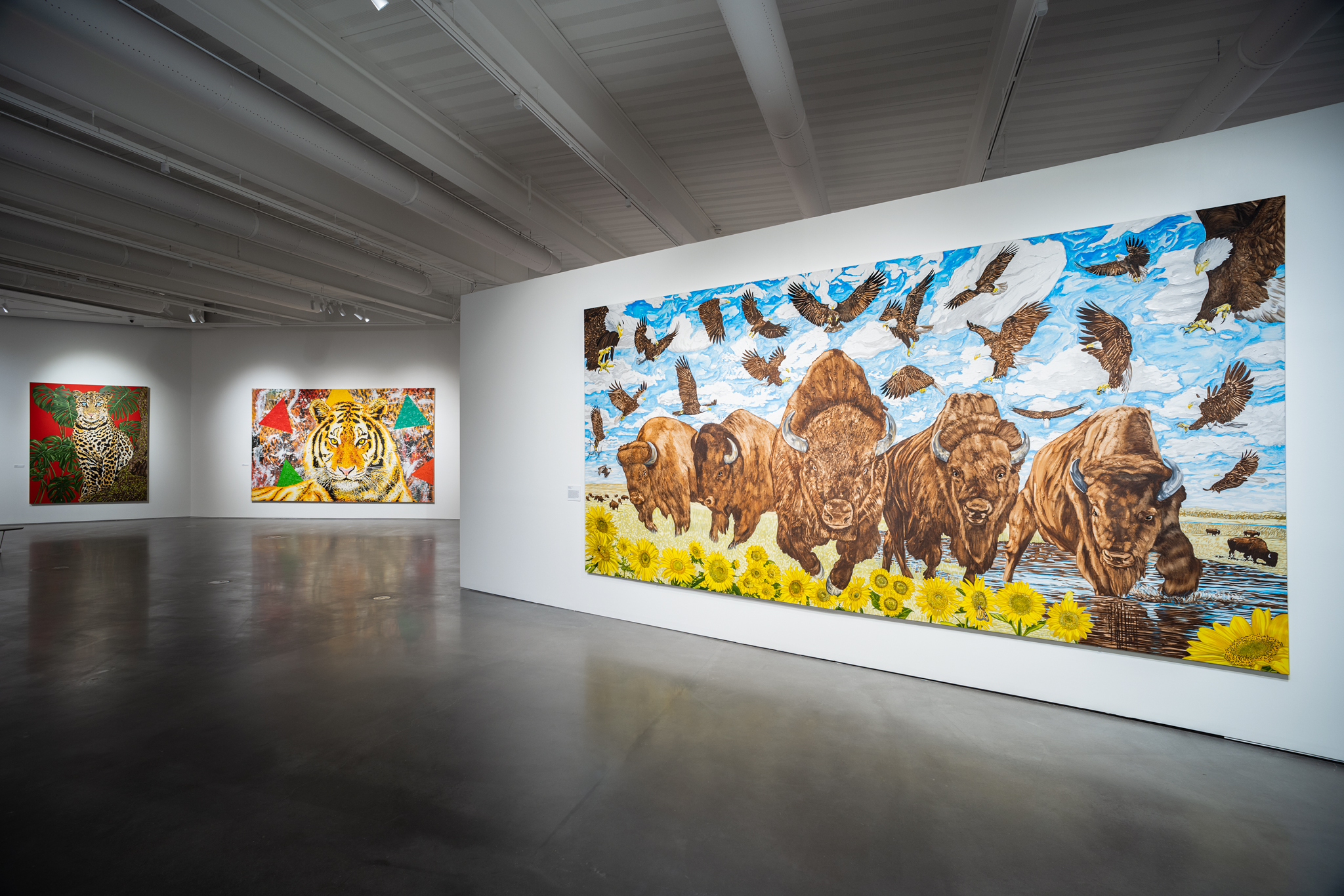
Well, there’s a challenge to all of them! Nature’s Course, if people came to see that, they have to know those are the largest pieces we will ever see in our gallery. (The John Newsom paintings) physically, from corner to corner in our (freight) elevator, were as big as we can bring in.
Another thing under my purview is lighting the exhibitions. The first thing we look at from lenders are lighting requirements. So some objects, like in Ed Ruscha: OKLA, since all the works were on paper, we had requirements about how much light we can put on each piece. Even if you filter the UV rays from the light, pieces can still be damaged, and some pieces are more susceptible than others. Like a bronze piece, you can put a lot of light on it. But with works on paper, the dye on it is a lot more fugitive. So we have a light meter, and we will measure the light on those kinds of pieces to make sure we are in compliance with loan agreements and best practices. In the Ruscha show, one of the things we did to help with lighting was to paint the walls gray. If you have a darker wall with a lighter-colored work, it makes the work look like it has more light on it … even though it doesn’t.

I also use a maquette (a small, 3-D representation of the gallery) for all the shows, but it’s different from show to show. Like with the Ed Ruscha retrospective, we kind of had artistic freedom with how we designed, laid out and put pieces up. However, the show we are doing now, The Art of Food, has six or seven thematic sections from an outside curator, so I have to make sure all of those objects are together. It can make it a little more challenging to design.
The way I generally look at it first are sight lines and what I think are major pieces — and when I say major pieces, I don’t mean that they are better than anything else in the show, I just mean it’s visually exciting. I try to anchor those things from one end of the exhibition that pulls you toward the other end.
I look at sight lines first. I look at pieces that are visually interesting, that will pull even non-art people. Some of us know Andy Warhol, but then again, a lot of people don’t know that. That’s our job as people who work in our industry, to teach those things people don’t know. So even if you just walk in and what brings you to the other end of the gallery is “Oh, that’s bright and shiny!” Well that’s OK, I did my job.
A stalwart on our staff and a friend among us, Boyd’s dedication, tenacity and creative expertise have been essential in producing and executing many incredible art installations. He’s a key voice in the OKC arts community, in and out of our building, and we can’t wait to show you all of the exhibitions in progress that our exhibits manager will design, light and install.
Images:
Steve Boyd at the opening of Gonzalo Lebrija's Breve historia del tiempo (2020). Photo: Chandra Boyd.
Steve Boyd at the opening of Tomas Saraceno's Cloud City (2012) in Campbell Ark Park. Photo: Quit Nguyen.
Renowned sculptor Melvin Edwards and Steve Boyd at the opening of Mel Edwards: In Oklahoma. Boyd and Edwards visited scrapyards around Oklahoma City to collect the literal tons of metal Edwards used to build works for the exhibition. Photo: Quit Nguyen.
Installation view of Orly Genger’s Terra (2014).
Steve and wife Chandra Boyd at the 2014 opening of Terra (2014).
Opening night of Gonzalo Lebrija's The History of Suspended Time: Monument for the Impossible (2015). Photo: Alex Marks.
Steve and colleague Angel Little during the installation of Not For Sale. Photo: Brandon Seekins.
Installation view of John Newsom's Nature's Course (2022). Photo: Alex Marks.
Installation view of Ed Ruscha: OKLA (2021). Photo: Alex Marks.
Return to New Light.









